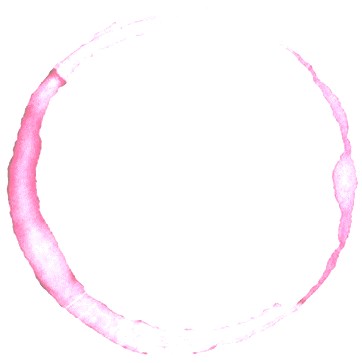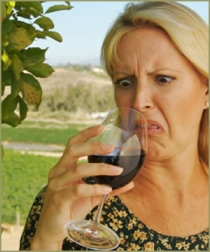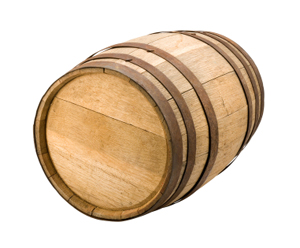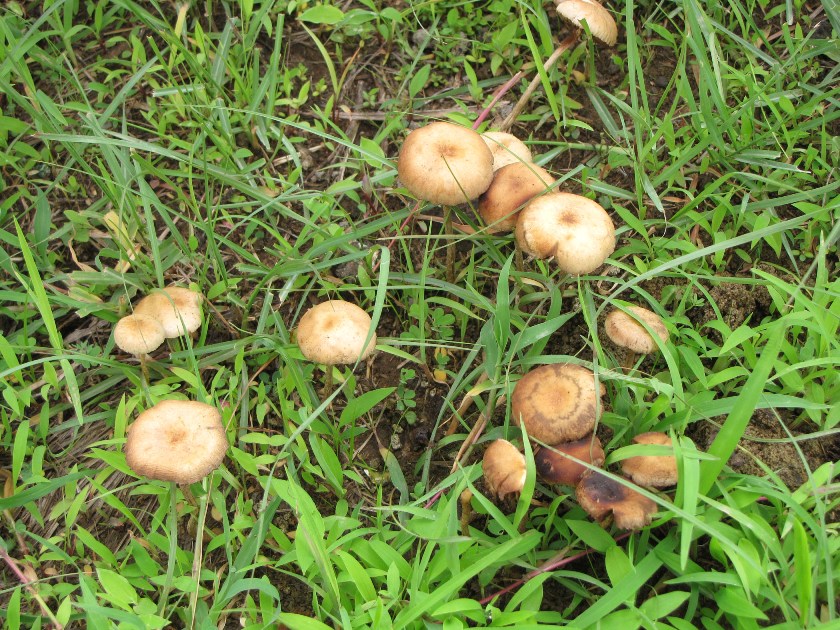
< Previous / Next >
 |
Article Index < Previous / Next > |

Will this Wine Improve with Time?
That was exactly the question asked of me at an open-house party that my
wife and I attended over the holidays. To set the tone, the gentleman
asking the question was a dead-ringer for Uncle Leo from Seinfeld.
Additionally, our friends recognize that I am fairly in tune to all things
wine-related and on occasion like to experiment on me with something
different. I also happen to know that they purchase better bottles, so
obviously there is little resistance on my part when offered a glass filled
with a mysterious beverage.
“Uncle Leo, let
The operative word here is ‘your’,
which at the time, I assumed to imply the old-timer stopped by the wine
shop to purchase a special bottle for the party. Nope, not the case,
as I found out rather quickly; Uncle Leo crafts his own brew in the
basement.
Now I fancy myself a gentleman of
sorts, and never criticise anyone that puts forth an honest effort,
regardless of the subject. Furthermore I never critique others for the
wine that they choose to drink, though sometimes it can be difficult to
control your facial expressions when caught off guard. This was one of
those times. 
By the way, why do short European men always get all puffed up when they are put on the defensive...
“You don’t like
my wine, young man? I made it myself, you know.”
“Yes, I see that…” taking a
precautionary step back.
“This batch is not my best you
know. It’ll probably get better if I don’t drink it for a year or two.
What do you think?”
Shit! If I say no, he’s gonna ask
why. “Ahh sure, why not? I’m sure a little time won’t do it any
harm.”
By the end of the evening Uncle Leo
was convinced that I was his nephew, we had pleasant conversations about
topics ‘other than wine’, and managed to find equilibrium over a few mixed
drinks. On the way home my wife sarcastically summed up the whole event up
with a single word – Nice! And then went on to suggest that perhaps I
could call and apologize the next day.
The question asked by my
retro-rerun friend was not completely out of place: Will the wine
improve with age? And sarcasm aside, the answer is still no. The
reason however is a bit more complex. Let us also clarify that nearly all
wine available at the wine shop is meant for immediate consumption, and if
kept it under reasonable storage conditions, it should remain drinkable for
two, possibly even three years in better examples. Beyond this
timeframe and the composition of the contents will begin to breakdown
resulting in a product that is strikingly similar to vinegar.
Another very common mistake is to
assume that because a wine is expensive, it must also be a candidate for
long-term cellaring. This is in fact not the case, and while most
age-worthy wines are indeed costly by comparison, there are many pricey
bottles that will not improve with time: a high-end Sauvignon Blanc from New
Zealand or an unoaked Chardonnay from anywhere (except perhaps some Chablis)
is best consumed during its vibrant youth, as are the majority of wine
products produced here in North America where soaring production costs also
dictate higher price tags. Of course exceptions to the rules will
always exist and this subject would be rather mundane without variation, but
in general, the following list will help you determine if a wine is worth
cellaring:
Reds
to hold
Classed Growth Bordeaux
Grand & Premier Cru Burgundy
Better Rhône Syrah & blends
Madiran
Amarone Classico
Barolo
Barbaresco Riserva
Brunello di Montalcino
Premium Australian Shiraz
Whites
to hold
Grand & better Premier Cru Burgundy
Sweet wines and Botrytized
Better Chenin Blanc from Loire
White Hermitage
Fortified
Wine to hold
Vintage Port
Sparkling
Wine
High-end Champagne (as a matter of personal taste)
Logically, the next question is:
for how long does one hold these bottles? Between 3 and 5 years is
normally more than adequate, though some products will continue to improve
in the bottle and remain drinkable for well over a decade. Factors
that influence a wine’s ability to improve with age are grape variety, oak
influence, residual sugar, and winemaking technique. The
thicker-skinned grapes such as Cabernet Sauvignon, Nebbiolo, Tannat, and
Syrah/Shiraz, to list a few, all contain higher amounts of the natural
phenol compound known as tannin.
You will recall that leather is created by the process of tanning cowhide
- and while the same production method is not used to make wine, we can
certainly draw a parallel between the two. The bitterness of the grape pips
will also contribute to the tannic structure of a wine as will the stems if
they are left attached during the crush. Should the winemaker elect to
press the grape clusters whole, the resultant wine will naturally adopt a
higher degree of astringency. 
As you research your next wine
purchase, consider if the winemaker has used French, American, or Slovenian
oak barrels. Each will impart different flavours, aromas, and phenolic
compounds to the wine. Are the barrels new or previously used? New oak has
a much greater influence than that which is on its second or third run.
Perhaps the wine was crafted in stainless steel vats with cost-effective oak chips added to
create the illusion of wood influence. New French oak barrels can cost
as much as $1000 each. These factors will not only affect the style
and ageing potential of a given wine, but its retail price as well.
If a winemaker allows or elects to
stop the fermentation early, the wine produced will retain a degree of
natural sweetness. Residual sugar also acts as a preservative and we
recognize one example of this style as late harvest or Spätlese Riesling.
In better years, the same effect is also found in the wines of Vouvray, a
product of the Chenin Blanc grape in
Reduced time spent in contact with
the grape skins (maceration) after the crush means that white wine
does not inherit the same degree of phenolic compounds as its red
counterpart. Oak influence will certainly add tannin structure to the wine,
but more frequently,
it is the fruit's natural acidity that acts as the preserving agent in this
case.
Storing your best bottles will
not preserve the wine in its present state: With
additional age, the colour component of red wine, along with any bitter
tannins will slowly begin to fade. At the same time, the fresh fruit
flavours diminish to take on more of a dried component – think fresh
raspberries versus dried cranberries. Additionally, new earth-driven aromas
such as mushrooms and forest floor may develop adding an element of
complexity to the equation. White wine becomes deeper in colour,
developing honeyed and butterscotch notes along with softer tropical
flavours such as mango and papaya over citrus zest. In some examples,
solvent or petrol aromas evolve which force any freshness to take a back
seat. For many of us, this just screams excitement and discovery, but
if you typically gravitate toward jammy
Can I suggest that you stop by your
local wine shop to purchase an example of both an older red and white wine?
It might cost you a little extra but I’ll bet the lasting effect will be
worth significantly more.
Enjoy!
| return to the Article Index | ||
Tyler Philp is a member of the Wine Writers' Circle of Canada Please direct inquires for writing services to: info@tylerphilp.com |
||
| Copyright © 2013 Tyler Philp
prior permission required for duplication of material |
||